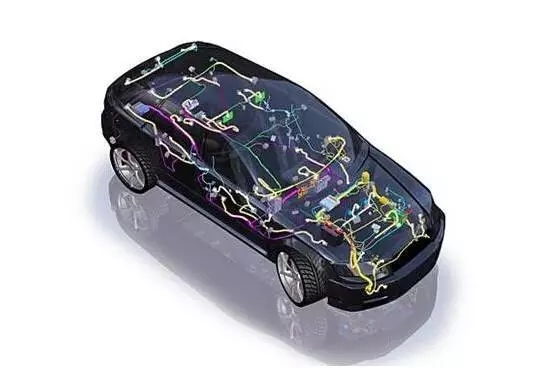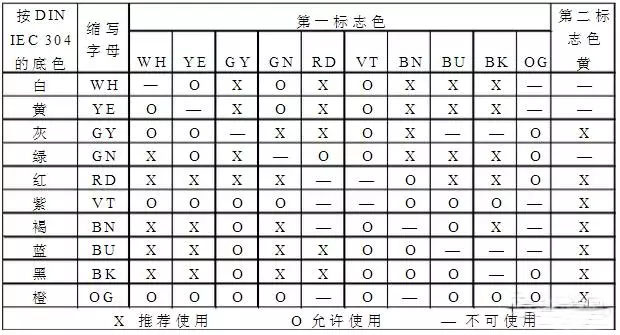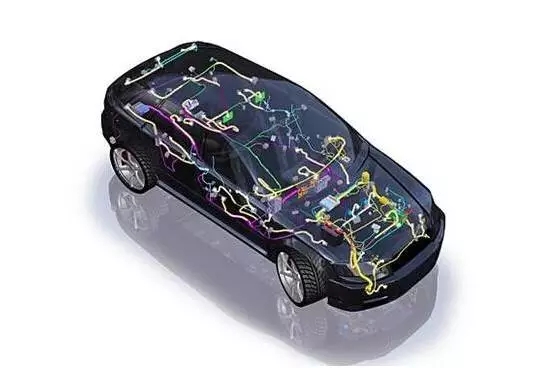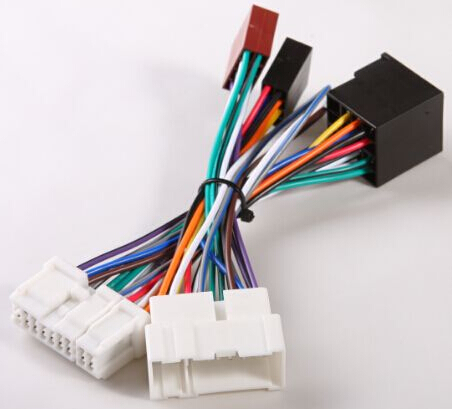
The car harness is the main body of the car circuit. At this stage, the form of the wire harness is generally composed of wires, connectors, harness wrapping materials and body fasteners. Automotive wiring harness to ensure that the transmission of electrical signals, but also to ensure the reliability of the circuit connected to the electrical and electronic components to supply the specified current value to prevent electromagnetic interference to the surrounding circuit, and to exclude electrical short circuit.
Automotive wiring harness from the function of the sub-points, can be divided into a carrier drive actuator (actuator) power line and the transmission of the sensor input command signal line two. The power line is a thick wire that carries high current, and the signal line is a fine wire that does not carry electricity.
Automotive wiring harness with the choice of wires, taking into account the electrical performance and vehicle physical properties, from the wire type, wire cross-sectional area, the color of the three sides to choose.
Selection of the first wire type
Harness Design Selection of Wire Type Focus on the environment and function of the harness.
Automotive wiring harness commonly used wires are usually used stranded stranded copper wire, insulated with PVC insulation material. To have temperature, oil, wear, waterproof, anti-corrosion, anti-oxidation, flame retardant and other characteristics.
According to user needs to select the standard wire, commonly used standard system with the standard, GB, German standard, American Standard, and so on.
GB: QVR, QVR-105, QFR, QVVR, etc .;
German standard: FLRY-A, FLRY-B, FLR4Y, FLR13Y and so on;
Standard: AV, AVS, AVSS, CAVS, AVX, AEX, etc.
American standard: GXL, TWP, TXL, GPT, HDT, STS and so on.
Select the appropriate wire type according to the physical performance of the vehicle. E.g:
The engine around the use of high temperature, oil, vibration, friction wire;
The luggage compartment cover the wire to be in the cold elastic wire;
Automatic transmission on the wire to be high temperature, hydraulic oil resistance, good temperature stability;
Weak signal sensors to use electromagnetic shielding wires, such as knock sensor and crankshaft position sensor, ABS wheel speed sensor;
Frequent open / close the door wire bending resistance requirements;
Across the body between the wires require good bending performance.
Commonly used wire features:
AVSS (AVS) wire is characterized by thin skin insulation, flexibility is better;
QVR is characterized by thick insulation, soft, good ductility;
German standard wire insulation thinner, good flexibility;
American standard wire insulation is generally thermoplastic or thermosetting elastomer, as well as through the irradiation process.
Selection of cross - sectional area of second conductor
Wire cross-sectional area selection principle:
The size of the electrical device power to determine the choice of wire cross-sectional area, the greater the cross-sectional area, the greater the current capacity.
Long-term work of electrical equipment can choose the actual carrying capacity of 60% of the wire;
Short-term work of electrical equipment can use the actual carrying capacity of 60% -100% of the wire.
According to the different working environment and the size of the temperature appropriate to change the cross-sectional area of the wire.
The direction of the wire, the number of connectors (that is, the size of the voltage drop) to change the cross-sectional area of the wire.
Wire cross-sectional area commonly used options:
The signal circuit has a cross-sectional area of 0.3,0.5 mm2.
Then the light bulb light source for the 1 ~ 2.5mm2;
Then the headlamps are l ~ 1.5mm2;
Then the light of the wire is 0.7 ~ 1.5mm2;
Then the lamp after the wire is 0.75 ~ 2.5mm2;
Then turn the light to the wire is 0.75 ~ 1mm2;
Then the instrument light guide wire 0.7 ~ 1.5mm2;
The wire of the wiper is l ~ 1.5mm2;
Then the wire is 1 ~ 2.5mm2;
Ignition line of the wire is 0.75 ~ 1.5mm2;
Power supply circuit with a cross-sectional area of 2,3,5 mm2;
The wires connected to the engine are 36, 43, 50, 70 mm2
Special circuit (starter / alternator engine ground wire, etc.) are 8,10,15,20 mm2
Calculate empirical formula:
I = P / UsA = IρL / Ud
I-current; P-power; Us-system voltage; A-conductor cross-sectional area; Ud- allow maximum voltage drop loss; ρ-copper resistivity;
The relationship between the allowable circulating current and the cross - sectional area of the conductor

Third wire color:
Automotive wiring harness, the choice of wire color and no uniform provisions, each vehicle factory requirements vary.
Wire color is also divided into: monochrome wire, two-color wire, three-color wire.
First, to facilitate the assembly and maintenance of automotive wiring harness;
Second, meet the corresponding wire standards
Standard List of Commonly Used Color Marks for

Descriptions of Commonly Used Color Marks
The color should be the background color + the first logo color + second logo color
Descriptions of Commonly Used Color Marks
The color should be the background color + the first logo color + second logo color

Standard for the common color of the wire

With the increase in the function of the car, the universal application of electronic control technology, more and more electrical parts, the wire will be more and more cars on the number of circuits and electricity significantly increased, the wiring harness becomes thicker and heavier The How to make a large number of wiring harness in a limited car space how to more rational and reasonable layout, so that the car harness to play a greater function, has become a car manufacturing industry problems.
















 RCCN WeChat QrCode
RCCN WeChat QrCode Mobile WebSite
Mobile WebSite



